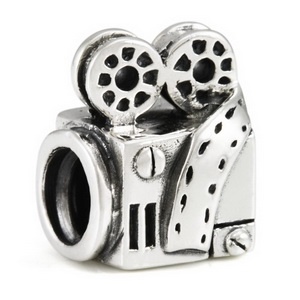 Silver is a precious metal that is naturally soft and possesses a brilliant luster. It is commonly used in such items as jewelry, flatware, and coins. When it comes to buying or collecting silver, it is important to know that there are different types. Some of these types include sterling silver, fine silver, and silver plate. Here we will examine what each of these types of silver are made of, how to tell the difference between each type, and discuss the difference in costs.
Silver is a precious metal that is naturally soft and possesses a brilliant luster. It is commonly used in such items as jewelry, flatware, and coins. When it comes to buying or collecting silver, it is important to know that there are different types. Some of these types include sterling silver, fine silver, and silver plate. Here we will examine what each of these types of silver are made of, how to tell the difference between each type, and discuss the difference in costs.
Sterling Silver Facts
In order to be considered “sterling silver,” the item must consist of at least 92.5% pure silver. The other 7.5% is comprised of other metals, typically copper, that act as an alloy to make the silver stronger and more resistant to tarnishing. For this reason, sterling silver makes a great choice for use in such products as jewelry and silverware. Although sterling silver looks very much like pure silver, it can be distinguished by looking for the numbers 925 stamped somewhere on the piece.
Fine Silver Facts
Fine silver is another name for what is also known as pure silver. This metal is derived directly from the ground and contains no other metals. Fine silver is unprocessed, and because it contains no alloys, it is an extremely soft metal. The softness can make pure silver very difficult to work with, and when it is exposed to elements in the air such as hydrogen sulfide or ozone, it tends to tarnish easily. Fine silver is an extremely shiny metal and is most often used in making pieces of very fine jewelry, or to embellish jewelry pieces made from materials other than silver. For a piece to be considered fine silver, or pure silver, it has to consist of 99% or more natural silver.
Facts About Silver Plate
Silver plating provides the shine and beauty of pure silver, but is far more durable and much more affordable. Items that are silverplated consist of a base metal to which actual silver is applied to the surface. In order to silverplate an object it must be electrically charged to attract the silver particles to it to for the silver plating. The chemical silver plating process adds a very thin layer of silver to the item. These items look just like natural fine silver, but are stronger and less expensive.
Common Ways To Tell The Difference
Fine silver and sterling silver items will come with a higher price tag than silver plated items. However, sterling and fine silver will retain their value over time, while silver plate does not tend to hold the same kind of value. Pure silver or sterling silver items will also be lighter in weight than something of the same size that is silver plated. This is because the pure and sterling silver is lighter than the other less expensive metals that are the base for the silver plated items. Sterling silver items are always marked with the number 925 somewhere on the piece. They may also bear the word “Sterling” stamped on the item. For fine silver, look for the imprinted letters FS or the numbers 99.9 stamped on the piece.
To distinguish silver plated items from other types of silver, look for markings such as EP, Silver on Copper, or EPNS (electroplated nickel silver) on the item. Avoid buying items that claim to be “layered in precious sterling” from sellers online, because the manufacturers are not even allowed to label a silver plated item using the word “sterling”, because it is misleading. Also, over the past year, there has been an unscrupulous scam involving sterling silver items from China being sold on Ebay and other online venues. It seems that these items are fraudulently marked with the classic “925” marking found on Sterling silver, but yet they are really just silver plated brass. Use caution when purchasing any Sterling silver products that are selling below market value from China until this issue is resolved.
Determining The Actual Value
Aside from the fact you’ll pay more for fine silver and sterling silver, in order to determine the actual value of the silver itself, you will need to measure its weight in what is known as “troy ounces.” A troy ounce is equal to approximately 31 grams. You can then weigh your silver items on an electronic scale that weighs in grams. After finding out the overall weight of your silver piece, multiply by the percentage of the fine or sterling piece’s purity, which would be .925 for sterling pieces. Use these figures to determine how much silver you have in troy ounces to determine its value.
